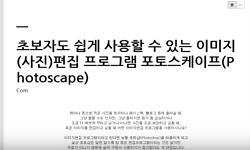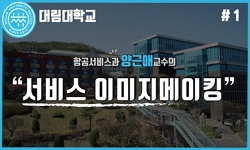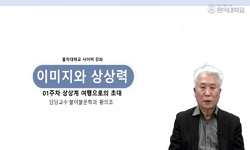The purpose of this study is to analyze image and versification rule of being embodied in Lee Byeong-gi Sijo. In the process of reproducing Gosijo(古詩調), which had been a song genre, into modern Sijo, which is a literature genre, Garam Lee Byeo...
http://chineseinput.net/에서 pinyin(병음)방식으로 중국어를 변환할 수 있습니다.
변환된 중국어를 복사하여 사용하시면 됩니다.
- 中文 을 입력하시려면 zhongwen을 입력하시고 space를누르시면됩니다.
- 北京 을 입력하시려면 beijing을 입력하시고 space를 누르시면 됩니다.
https://www.riss.kr/link?id=A100403764
- 저자
- 발행기관
- 학술지명
- 권호사항
-
발행연도
2014
-
작성언어
Korean
-
주제어
이병기 시조 ; 시조혁신론 ; 용어의 수삼 ; 취재 범위의 확장 ; 실감실정 ; 격조의 변화 ; 연시조 ; 이미지즘 이론 ; 일상용어 ; 주제 선택의 자유 ; 이미지 ; 새로운 리듬 ; 중점 집중 ; Lee Byeong-gi Sijo ; Sijo renovation theory ; Diversification in terminology ; Expansion in coverage range ; Silgamsiljeong(實感實情:actually experiencing and feeling) ; A change in tone ; Yeonsijo(聯時調) ; Imagist Theory ; Daily terminology ; Freedom of choosing a topic ; Image ; New rhythm ; Emphasized concentration
-
등재정보
KCI등재
-
자료형태
학술저널
-
수록면
219-246(28쪽)
-
KCI 피인용횟수
0
- 제공처
- 소장기관
-
0
상세조회 -
0
다운로드
부가정보
다국어 초록 (Multilingual Abstract)
In the middle of analyzing Sijo works that were put in Lee Byeonggi’s 『Collection of Garam`s Sijo Poems』, it could demonstrate that Lee Byeong-gi was influenced by ‘use of daily terminology,’ ‘freedom of choosing a topic,’ ‘suggestion of image(imagery),’ ‘creation of new rhythm,’ and ‘emphasized concentration,’ which correspond to the imagist theory, thereby having asserted ‘diversification in terminology,’ ‘expansion in coverage range,’ ‘Silgamsiljeong(實感實情: actually experiencing and feeling),’ ‘a change in tone,’ and ‘creation in Yeonsijo(聯時調)’ in the Sijo renovation theory and having applied these theories to the creation of a work.
The purpose of this study is to analyze image and versification rule of being embodied in Lee Byeong-gi Sijo. In the process of reproducing Gosijo(古詩調), which had been a song genre, into modern Sijo, which is a literature genre, Garam Lee Byeong-gi accepted the Anglo-American imagist theory in the 1910s, thereby having systematized a theory of modern Sijo.
In the middle of analyzing Sijo works that were put in Lee Byeonggi’s 『Collection of Garam`s Sijo Poems』, it could demonstrate that Lee Byeong-gi was influenced by ‘use of daily terminology,’ ‘freedom of choosing a topic,’ ‘suggestion of image(imagery),’ ‘creation of new rhythm,’ and ‘emphasized concentration,’ which correspond to the imagist theory, thereby having asserted ‘diversification in terminology,’ ‘expansion in coverage range,’ ‘Silgamsiljeong(實感實情: actually experiencing and feeling),’ ‘a change in tone,’ and ‘creation in Yeonsijo(聯時調)’ in the Sijo renovation theory and having applied these theories to the creation of a work.
목차 (Table of Contents)
- 1. 서론
- 2. 이병기 시조의 어휘 선택과 이미지
- 3. 이병기 시조의 리듬 창조와 의미의 확장
- 4. 결론
- 참고문헌
- 1. 서론
- 2. 이병기 시조의 어휘 선택과 이미지
- 3. 이병기 시조의 리듬 창조와 의미의 확장
- 4. 결론
- 참고문헌
- [Abstract]
참고문헌 (Reference)
1 김제현, "현대시조작법" 새문사 1999
2 김재근, "이미지즘연구" 정음사 1973
3 김양수, "이미지즘과 모더니즘 그리고 한국의 현대시" 영남 시조문학회 (42) : 22-70, 2008
4 이병기, "시조란 무엇인가"
5 이태극, "시조개설" 새글사 1959
6 서정호, "백석의 시에 형상화된 시어의 이미지즘적 특성 연구" 동국대학교 교육대학원 2011
7 이상섭, "문학 연구의 방법" 2005
8 차승기, "근대문학에서의 전통 형식 재생의 문제" 상허학회 17 : 9-33, 2006
9 박지영, "근대 한·일 정형단시의 비교연구 : 혁신기의 단가와 시조를 중심으로" 한국외국어대학교 대학원 2006
10 정지용, "가람시조집" 발 1939
1 김제현, "현대시조작법" 새문사 1999
2 김재근, "이미지즘연구" 정음사 1973
3 김양수, "이미지즘과 모더니즘 그리고 한국의 현대시" 영남 시조문학회 (42) : 22-70, 2008
4 이병기, "시조란 무엇인가"
5 이태극, "시조개설" 새글사 1959
6 서정호, "백석의 시에 형상화된 시어의 이미지즘적 특성 연구" 동국대학교 교육대학원 2011
7 이상섭, "문학 연구의 방법" 2005
8 차승기, "근대문학에서의 전통 형식 재생의 문제" 상허학회 17 : 9-33, 2006
9 박지영, "근대 한·일 정형단시의 비교연구 : 혁신기의 단가와 시조를 중심으로" 한국외국어대학교 대학원 2006
10 정지용, "가람시조집" 발 1939
11 이병기, "가람문선" 신구문화사 1971
12 오승희, "가람 이병기 시조의 공간 연구" (4) : 331-, 1990
13 김종률, "가람 시조의 혁신성에 대한 고찰 : 창작 지침의 측면을 중심으로" 경기대학교 교육대학원 1996
14 吳昇姬, "現代詩調의 空間硏究" 동아대학교 대학원 1992
15 金衡泰, "古時調에 나타난 自然觀 연구 : [꽃]. [나무]. [새]를 중심으로" 단국대학교 대학원 1992
16 이창배, "20세기 영미시의 전개: 재조명" (4) : 183-, 1999
동일학술지(권/호) 다른 논문
-
- 한국어문학회
- 김현화(Kim, Hyun-Hwa)
- 2014
- KCI등재
-
- 한국어문학회
- 김재석(Kim, Jae-Suk)
- 2014
- KCI등재
-
- 한국어문학회
- 양정임(Yang, Jung-Im)
- 2014
- KCI등재
-
회고록 『세기와 더불어』 시가문학 현황과 민족주의적 향유배경
- 한국어문학회
- 이노형(Lee, No-Hyeung)
- 2014
- KCI등재
분석정보
인용정보 인용지수 설명보기
학술지 이력
| 연월일 | 이력구분 | 이력상세 | 등재구분 |
|---|---|---|---|
| 2026 | 평가예정 | 재인증평가 신청대상 (재인증) | |
| 2020-01-01 | 평가 | 등재학술지 유지 (재인증) |  |
| 2017-01-01 | 평가 | 등재학술지 유지 (계속평가) |  |
| 2013-01-01 | 평가 | 등재학술지 유지 (등재유지) |  |
| 2010-01-01 | 평가 | 등재학술지 유지 (등재유지) |  |
| 2008-01-01 | 평가 | 등재학술지 유지 (등재유지) |  |
| 2006-01-01 | 평가 | 등재학술지 유지 (등재유지) |  |
| 2004-01-01 | 평가 | 등재학술지 유지 (등재유지) |  |
| 2001-07-01 | 평가 | 등재학술지 선정 (등재후보2차) |  |
| 1999-01-01 | 평가 | 등재후보학술지 선정 (신규평가) |  |
학술지 인용정보
| 기준연도 | WOS-KCI 통합IF(2년) | KCIF(2년) | KCIF(3년) |
|---|---|---|---|
| 2016 | 0.56 | 0.56 | 0.56 |
| KCIF(4년) | KCIF(5년) | 중심성지수(3년) | 즉시성지수 |
| 0.54 | 0.53 | 0.99 | 0.1 |




 DBpia
DBpia







